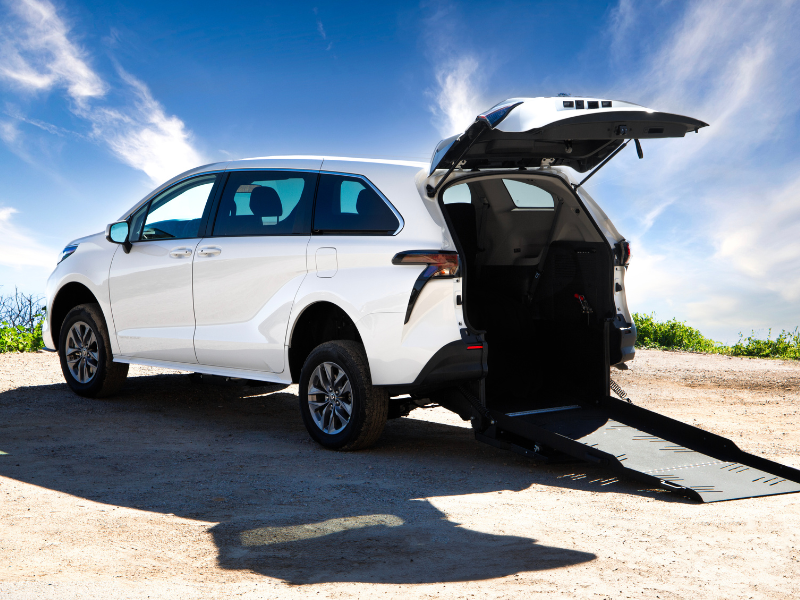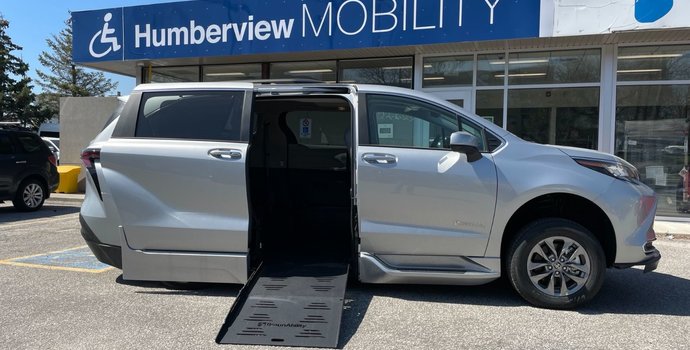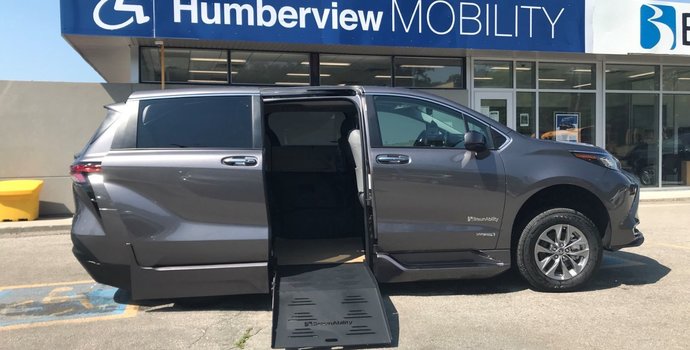Ontario winters test every vehicle—but converted mobility vehicles face unique challenges that standard winterizing guides don't address. Wheelchair ramps, power lifts, and lowered floor conversions require specialized maintenance to function reliably when temperatures drop and road salt accumulates.
This guide covers the critical winter preparation steps for converted vehicles, from protecting battery systems that power accessibility equipment to maintaining moving parts exposed to harsh conditions. For converted vans, SUVs, or trucks, these checks help ensure your mobility equipment works when you need it most.
Understanding Battery Demands in Converted Vehicles
Converted vehicles place significantly higher demands on electrical systems than standard vehicles. Power ramps, lifts, and kneeling systems draw substantial current—and cold weather reduces battery capacity by up to 50% at -18°C.
Why Battery Maintenance Matters More:
- Accessibility equipment requires reliable power on demand
- Cold temperatures reduce available battery capacity
- Parasitic draw from electronics accelerates discharge during storage
- Multiple battery systems may be present in some conversions
For vehicles stored longer than 30 days, maintain battery state of charge at approximately 50%. Consider disconnecting the 12-volt battery to reduce system loads, or use a trickle charger for extended storage periods. This prevents the electrolytes from reducing to water, which can freeze and damage the battery.
Check battery connections monthly. Clean any corrosion from terminals using a wire brush, and neutralize acid buildup with a solution of baking soda and water. Ensure all connections are tight—loose terminals reduce available power to accessibility equipment.
Protecting Ramps and Lift Mechanisms from Salt and Ice
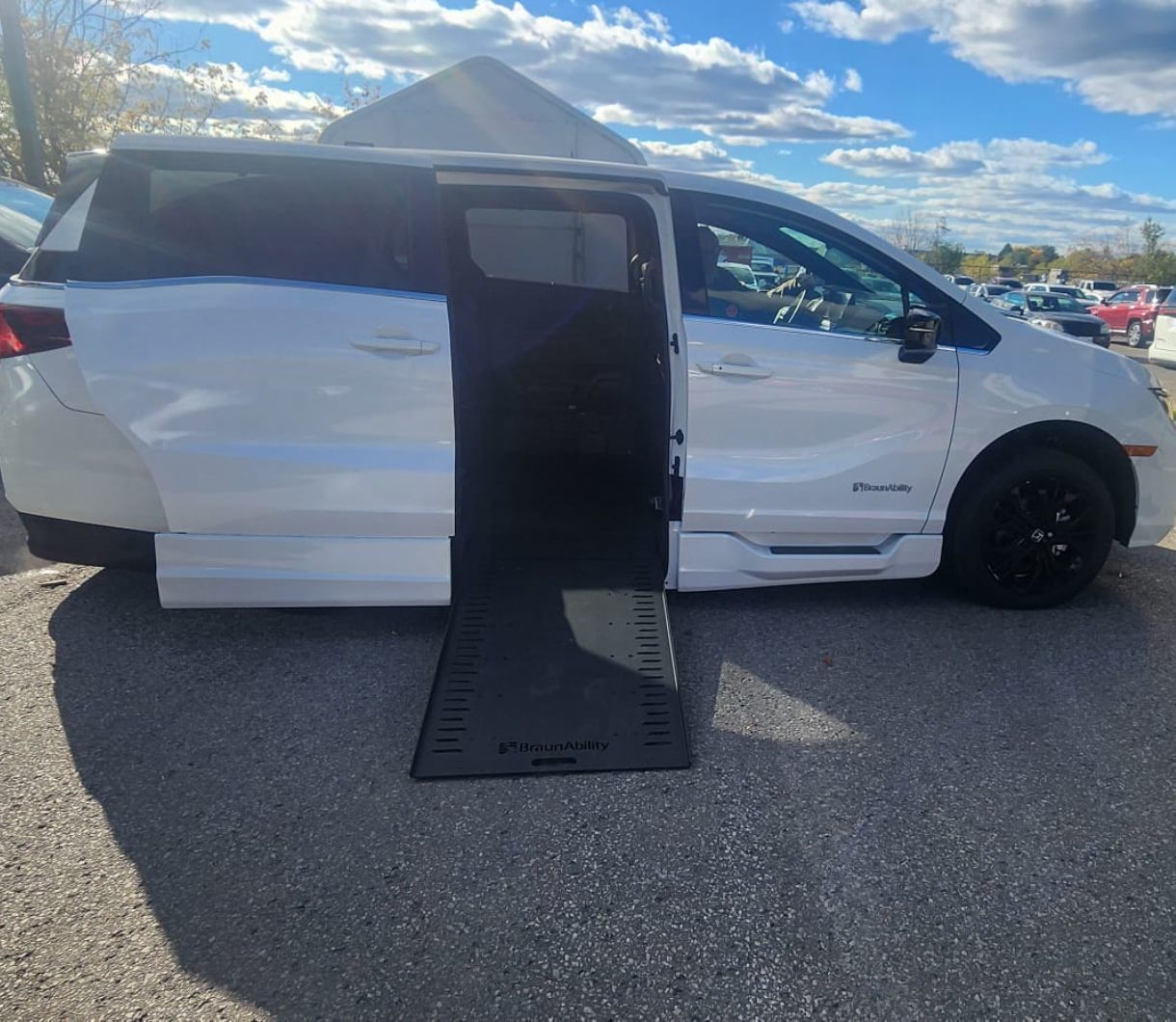
Moving parts exposed to road conditions require proactive protection. Wheelchair ramps, power lifts, and door mechanisms accumulate salt, sand, and ice that can cause jamming or mechanical failure.
Critical Maintenance Points:
Ramp Hinges and Pivot Points:
- Inspect for salt accumulation in hinge areas and door channels
- Clear debris before it hardens or freezes
- Apply appropriate lubricant to all moving parts
- Test full range of motion before cold weather arrives
Power Lift Systems:
- Check hydraulic fluid levels and condition
- Inspect lift arms and mounting points for corrosion
- Verify motor operation under no-load conditions
- Lubricate cables, levers, and pins to prevent rust
Door Mechanisms:
- Ensure weatherstripping remains flexible in cold temperatures
- Check door latches and locks for proper operation
- Apply grease to linkages and pivot points
- Test automatic door systems repeatedly to verify consistent operation
Make sure all linkages, cables, levers, and pins under your vehicle are covered with grease to prevent rust. Move the vehicle at least 7.5 metres every 15 days to lubricate working parts and prevent corrosion—this is particularly important for conversion components with exposed mechanisms.
Ground Clearance and Undercarriage Considerations
Lowered floors in converted vehicles reduce ground clearance compared to standard models. This makes undercarriage protection and snow accumulation management more critical.
Before winter arrives, inspect the underside of your vehicle for any conversion-related components that sit lower than the original chassis. Pay particular attention to:
- Battery mounting locations (some conversions relocate batteries lower)
- Hydraulic lines and electrical conduits
- Structural reinforcements added during conversion
- Spots prone to snow and ice accumulation that can restrict movement
Wash your vehicle thoroughly to remove dirt, grease, oil, tar, or mud from exterior surfaces, rear wheel housings, and the underside of front fenders. This prevents corrosion and allows you to identify any damage before it worsens.
Check for and remove any excess ice or snow that has accumulated on the chassis, around the tires, or on the brakes after each winter drive. Reduced ground clearance means converted vehicles pick up more snow pack than standard vehicles.
Tire and Brake System Checks
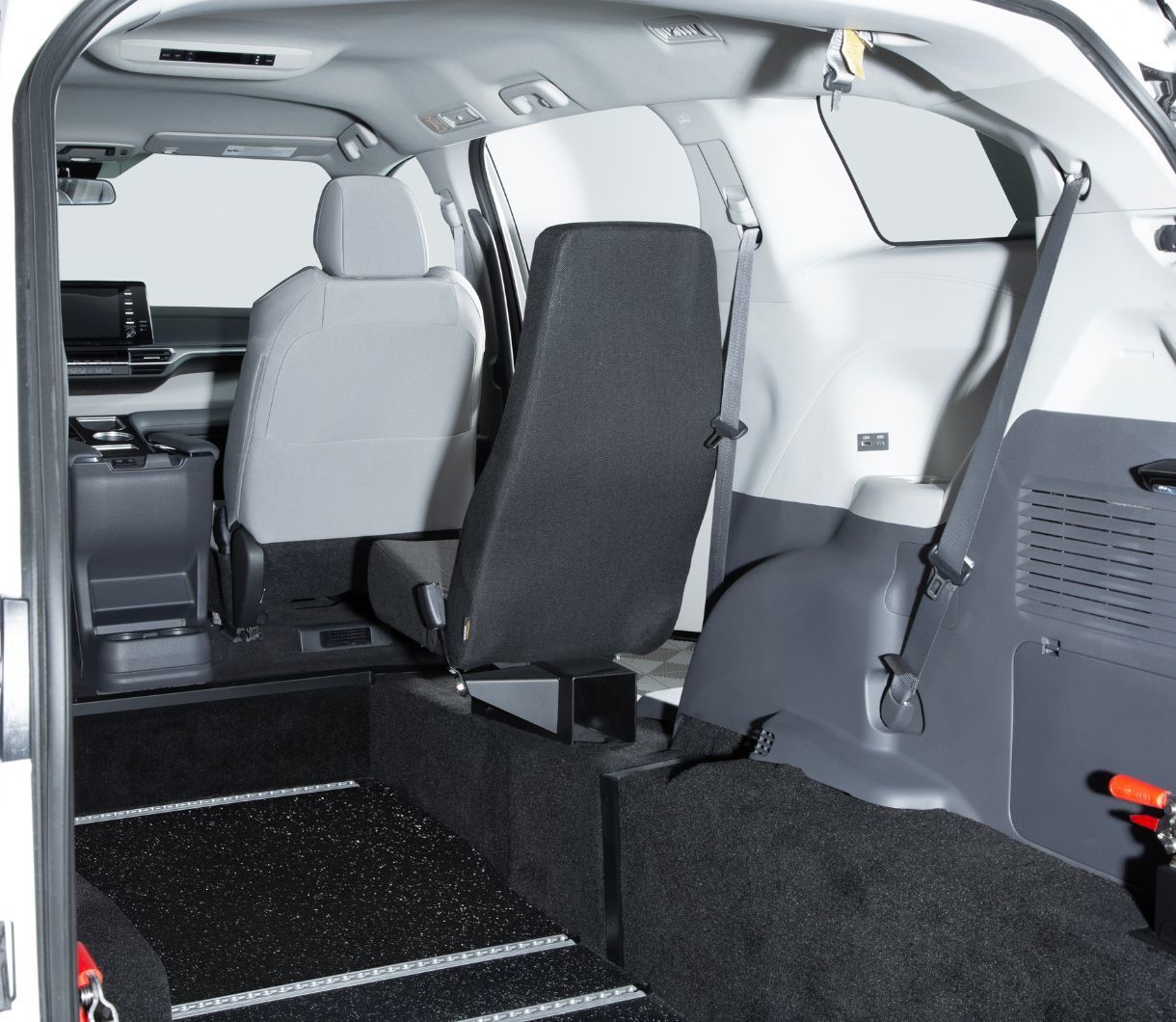
Converted vehicles often carry additional weight from accessibility equipment and structural modifications. This places extra demands on tires and brakes during winter conditions.
Tire Maintenance:
- Maintain recommended air pressure—check monthly as cold temperatures reduce pressure
- Inspect for uneven wear patterns that indicate alignment issues from conversion weight
- Consider winter tires on all four wheels for optimal traction
- To minimize flat spots during storage, inflate all four tires to recommended cold pressures
Brake System Care:
- Make sure brakes and parking brake fully release
- After washing or extended storage, drive the vehicle and gently apply and release brakes repeatedly over a 10-minute drive to reduce corrosion from brake discs, pads, and linings
- Check brake pedal operation regularly—corroded brake rotors can cause brake noise
- If parking for extended periods after cleaning, drive a few minutes first to reduce corrosion risk
Note: Some converted vehicles have modified parking brake systems. If your vehicle has automatic parking brake features, consider turning automatic mode off during winter to prevent freezing issues.
Fluid Systems and Cold-Weather Preparation
Use fluids appropriate to Ontario's winter temperatures. This includes engine oil, engine coolant, power control unit coolant (for hybrid systems), and washer fluid rated for extreme cold.
Check fluid levels regularly—including coolant, oil, and fuel—to ensure there are no leaks and fluids are at recommended levels. Fill the fuel tank with high-quality fuel until the first automatic shutoff of the fuel pump nozzle when storing your vehicle.
For vehicles with block heaters, have the system inspected before winter. Block heaters reduce engine wear and improve cabin heating in extreme cold—particularly valuable when accessibility equipment requires immediate operation.
Pre-Winter Professional Inspection
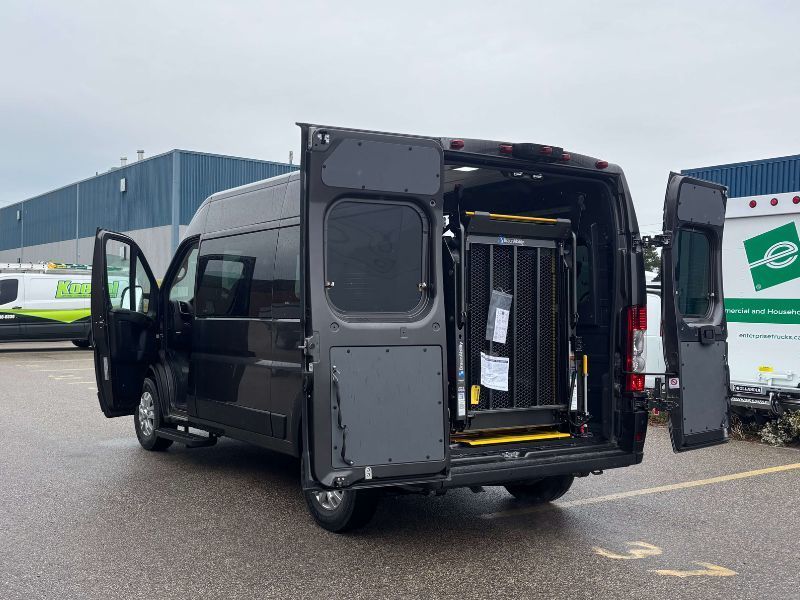
Have a service technician familiar with converted vehicles inspect:
- Battery condition and charging system operation
- All accessibility equipment electrical connections
- Hydraulic systems (if equipped with power lifts)
- Structural integrity of conversion components
- Proper operation of all safety systems
This inspection should happen before the first major snowfall. Addressing issues in moderate temperatures is safer and more cost-effective than emergency repairs in winter conditions.
Storage and Seasonal Preparation
If you plan to store your converted vehicle for 30 days or more, follow these additional steps:
Change the engine oil and filter prior to storage—used engine oil contains contaminants that may cause engine damage. Start the engine every 15 days for a minimum of 15 minutes, running at fast idle with climate controls set to defrost until the engine reaches normal operating temperature.
With your foot on the brake, shift through all gears while the engine is running. This maintains transmission fluid circulation and prevents internal corrosion.
Store vehicles in a dry, ventilated place when possible. If stored outside, they require regular maintenance to protect against rust and weather damage.
Removing Your Vehicle from Winter Storage
When your converted vehicle is ready for use after storage:
- Wash thoroughly to remove dirt or grease film buildup on windows
- Check windshield wipers for deterioration
- Inspect under the hood for any foreign materials such as rodent nests
- Check the exhaust for blockages
- Set tire pressures to recommended levels
- Check brake pedal operation
- Verify fluid levels show no leaks
- Test all accessibility equipment before first use
- If battery was removed, clean cable ends and check for damage
Drive the vehicle and gently apply brakes repeatedly over a 10-minute drive to reduce any corrosion that developed during storage.
Specialized Winter Driving Considerations
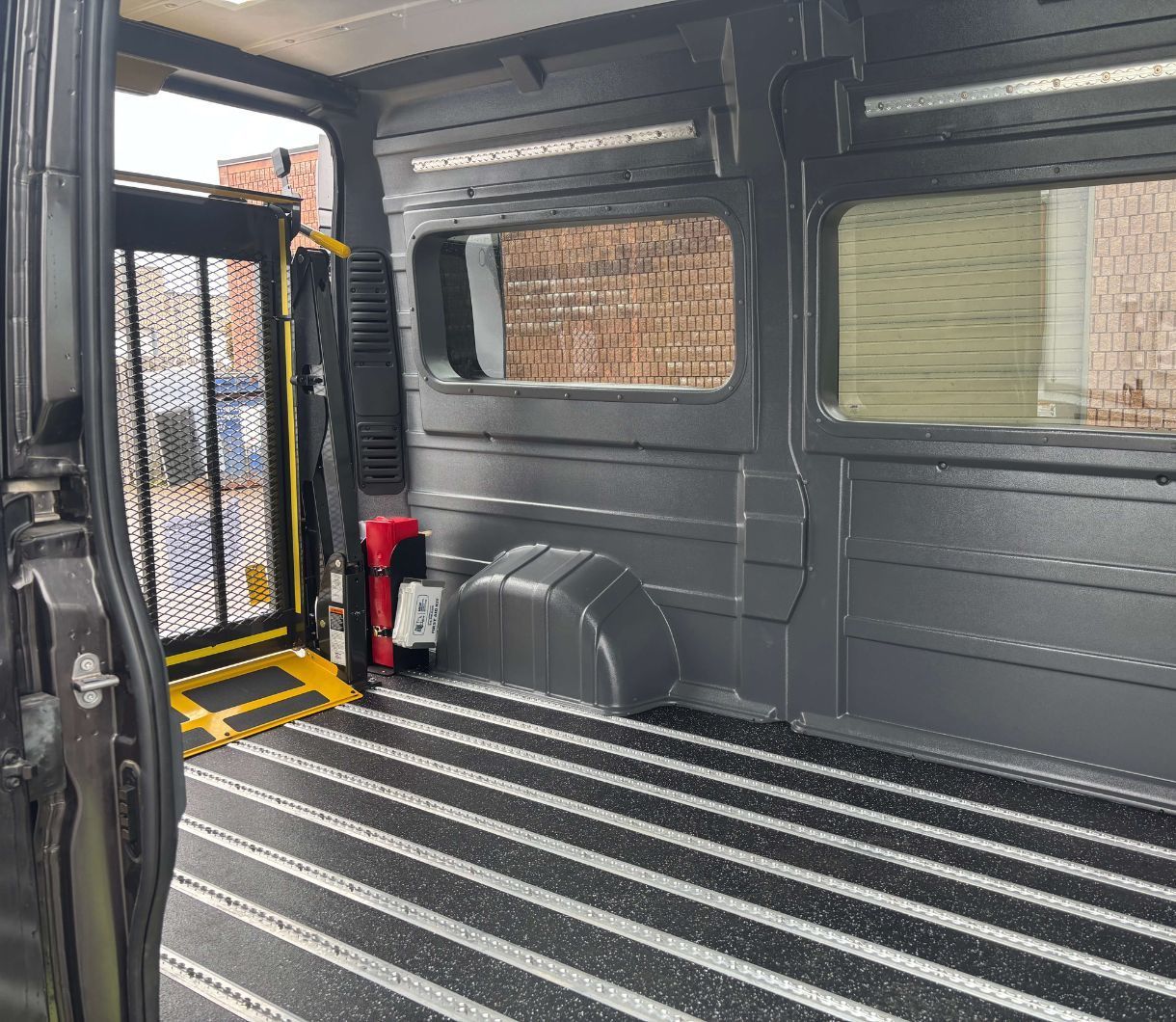
Converted vehicles handle differently than standard vehicles due to weight distribution changes and lowered floors. In winter conditions:
- Accelerate slowly and maintain safe following distances
- Drive at reduced speeds suitable to road conditions
- Be aware that additional weight from conversion equipment affects braking distances
- Remove snow or mud from shoes before entering—moisture accelerates corrosion of interior conversion components
- Allow extra time for accessibility equipment to operate in cold temperatures
Your Winter Maintenance Partner
Preparing a converted vehicle for Ontario winters requires specialized knowledge of both standard automotive systems and accessibility equipment. At Humberview Mobility, our technicians understand the unique maintenance needs of converted vehicles and can provide comprehensive winter preparation services.
From battery system checks to ramp mechanism lubrication, we ensure every component of your mobility vehicle is ready for winter conditions. Our team can identify potential issues before they become problems and provide expert guidance on maintaining your vehicle's accessibility features year-round.
Contact Humberview Mobility to schedule your winter inspection and ensure your converted vehicle is ready for the season ahead.


